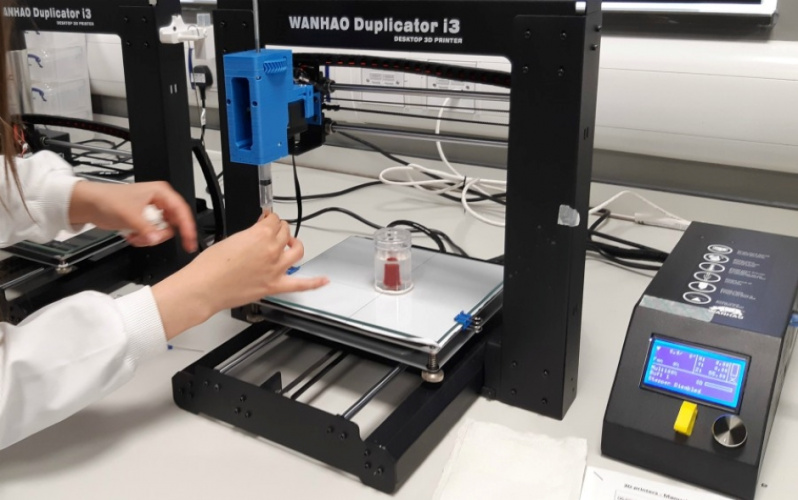UK team 3D prints soft biomaterials
Birmingham University researchers have developed a technique to print soft biomaterials that could be used to repair defects in the body.

Printing soft materials using additive manufacturing is problematic because if they are not supported they sag and lose their shape. The new technique - Suspended Layer Additive Manufacturing (SLAM) – uses a polymer-based hydrogel in which the particles have been manipulated to create a self-healing gel. According to Birmingham University, liquids or gels can be injected directly into this medium and built up in layers to create a 3D shape.
Anti-bacterial silver lining for implants and 3D printed prosthetics
US researchers 3D print viable human tissue
The method is claimed to offer an alternative to existing techniques which use gels that have been minced to form a slurry bath into which the printed material is injected. Called Freeform Reversible Embedding of Suspended Hydrogels (FRESH), these offer many advantages, but frictions within the gel medium can distort the printing.
In a study published in Advanced Functional Materials, a team led by Professor Liam Grover, in the School of Chemical Engineering, show how particles in the gel they have developed can be sheared, or twisted so they separate, but still retain some connection between them. This interaction creates the self-healing effect, enabling the gel to support the printed material so objects can be built with precise detail, without leaking or sagging.
Register now to continue reading
Thanks for visiting The Engineer. You’ve now reached your monthly limit of news stories. Register for free to unlock unlimited access to all of our news coverage, as well as premium content including opinion, in-depth features and special reports.
Benefits of registering
-
In-depth insights and coverage of key emerging trends
-
Unrestricted access to special reports throughout the year
-
Daily technology news delivered straight to your inbox










Water Sector Talent Exodus Could Cripple The Sector
Maybe if things are essential for the running of a country and we want to pay a fair price we should be running these utilities on a not for profit...